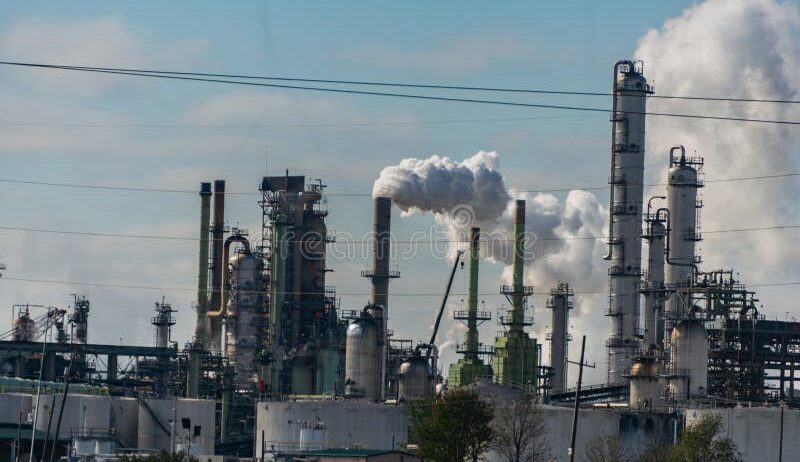In the ever-evolving narrative of climate change, power plants emerge as colossal leviathans, exhaling plumes of greenhouse gases that suffocate our planet. These massive structures, often positioned at the nexus of economic growth and environmental degradation, serve as a paradoxical metaphor for the modern industrial age. It is time to recalibrate our ambitions—”Power Down, Planet Up” captures the imperative to diminish the noxious emissions that emerge from these facilities in order to foster a resilient and vibrant Earth.
To grasp the significance of curtailing power plant pollution, we must first understand the multifaceted tapestry of energy production. Traditional power plants, particularly those reliant on fossil fuels like coal, oil, and natural gas, are fundamentally polluters. They emit staggering volumes of carbon dioxide, sulfur dioxide, and nitrogen oxides, thus contributing to the degradation of air quality and the exacerbation of climate change. Each puff of smoke is not merely a symbol of industrial progress; it is a harbinger of global warming, a potent weapon in the arsenal of anthropogenic climate change.
In seeking solutions, the imperative is not merely to reduce emissions but to revolutionize our energy paradigm. This means transitioning to cleaner alternatives—solar, wind, hydroelectric, and geothermal sources that harness the inexhaustible forces of nature. The winds that sweep across vast plains, the sun that bathes us in light, and the flowing rivers that carve our landscapes all present opportunities for harnessing energy without the grievous side effects associated with fossil fuel combustion.
The metaphor of “powering down” entails a profound rethinking of how we generate and consume energy. It invokes imagery of a dimming light, one that, rather than signaling a retreat, heralds an age of sustainability. The narrative of energy efficiency plays a pivotal role in this metamorphosis. Embracing energy-efficient technologies and practices can significantly reduce the demand placed on power plants, thus lessening their pollutive output. From LED lighting to advanced manufacturing techniques, innovation serves as our ally in this necessary quest.
Moreover, the pursuit of energy democracy cannot be overlooked. It entails the ideation of a power ecosystem that is decentralized and community-driven. Localized energy production through solar panels and small-scale wind turbines empowers individuals and communities to reclaim agency over their energy sources. This grassroots approach negates the need for sprawling power plants and their associated pollution, while simultaneously fostering economic resilience and social equity.
Yet, the path toward reducing power plant pollution cannot be navigated solely through technological advancements or individual efforts. It necessitates robust policy frameworks that prioritize environmental integrity over economic expediency. Governments and regulatory bodies must implement stringent emissions standards and incentivize the adoption of renewable energy systems. Multi-faceted strategies such as carbon pricing, cap-and-trade systems, and renewable energy credits can catalyze the transformation our planet so desperately needs.
Engagement with the public is equally critical. The term “climate literacy” becomes essential in this context, as educating individuals about the adverse effects of power plant pollution equips them to advocate for necessary changes. Through workshops, media campaigns, and social media outreach, the conversation around energy and its implications for climate change must be thrust into the mainstream. Grassroots movements, characterized by fervent activism and community mobilization, can reshape public perception, compelling stakeholders to prioritize sustainable practices.
Furthermore, the interconnection between power plant pollution and broader environmental issues deserves attention. The ramifications of industrial emissions extend beyond global warming; they propagate ecological degradation, compromising biodiversity and public health. Pollutants emitted from power plants can acidify ecosystems, lead to respiratory illnesses in vulnerable populations, and threaten our water resources through contamination. This intricate web of consequences serves as a clarion call to act, linking the fight against climate change with the preservation of human health and natural ecosystems.
Addressing power plant pollution is also deeply intertwined with social justice. Historically marginalized communities often bear the brunt of pollution, living in proximity to these facilities that compromise their health and livelihood. The concept of environmental justice amplifies the need for equitable solutions in addressing power plant emissions, ensuring that no group is disproportionately impacted by the repercussions of industrial action. In this light, the movement to “power down” becomes not just an environmental imperative but a moral one.
In synthesizing all facets of this discourse, the clarion call remains: “Power Down, Planet Up.” To embrace this ethos is to acknowledge responsibility for the trajectory of our shared future. It is an invitation to collectively disentangle ourselves from the grip of antiquated energy systems and to rise as stewards of the Earth. This transformative journey requires robust collaboration among individuals, communities, policymakers, and businesses alike, forging an alliance geared toward a sustainable future.
As the world stands at a crossroads, the allure of a cleaner, greener planet beckons. By curtailing emissions from power plants, we possess the extraordinary potential to rewrite the narrative of climate change, creating an enduring legacy for generations yet to come. Ultimately, this endeavor is about more than halting pollution; it is about nurturing a planet that thrives—a testimony to our commitment to safeguard the environment and ensure the viability of life itself.
The time for action is now. Our planet depends on it.






